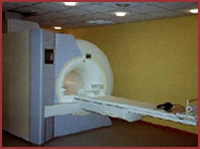Medical device depreciation friend or foe?


The reason? Too many scanners are old. (This scanner, at Pocono MRI, was bought in 1991 and replaced in 2002.)
The article claims that "accrediting" imaging centers is the way forward. There's a process for that, and part of last year's Medicare bill endorses that.
But there's a simpler answer. Depreciation.
Depreciation is what accountants call the process of spreading the cost of a capital good over its useful life. Once that end point is reached all that is left is salvage value, and a smart business will look to a replacement.
Different goods depreciate at different rates. Copiers depreciate faster than buildings.
The trick is to find the right rate, and when you're dealing with electronics this is not easy. That's because, as any PC user knows, a piece of electronics can be technically worthless yet still work well. That old laptop may run Windows 95 fine but its market value is still nil -- it's still salvage.
One very clever trick of Moore's Law is that it accelerates depreciation. I thought of my first PC, a Kaypro I bought in 1982, as three-year property. One of the great innovations of that era was to allow expensing up to $5,000 in personal office expenses per year -- this let me turn PCs into one-year property.
Depreciation acceleration turns out to be especially newsworthy when we turn to things like MRIs. Today's MRIs are so much better than yesterday's the old stuff is worthless, even though it may work well, even though it may have cost a fortune.
This should be good news to companies like Siemens, which make MRIs. They know where the old gear is. If we can establish just how old gear should not be, they should be able to help customers depreciate the old stuff, trash it, and get new stuff.
But here is where it gets tricky. Customers don't want to obsolete old gear. Doctors who got together on an MRI 10 years ago and built their own imaging shop around it don't want to be told to replace it or go out of business.
That's where accreditation comes in. The problem is that the lead accrediting agency here, the American College of Radilogists, is geared around accrediting people, not gear.
I checked out the ACR's group blog and found this piece by James Thrall, describing how lower-cost gear (another product of Moore's Law) is causing more primary care physicians to buy radiology gear and do their own scans.
What this tells me is that, by accrediting gear and not just users, the ACR can both control competition and improve care by getting old gear retired. It also tells me that, if prices are declining, accelerating depreciation is becoming essential to the industry as well.
So how can we accelerate depreciation and make certain that every scan you get is a worthwhile scan?